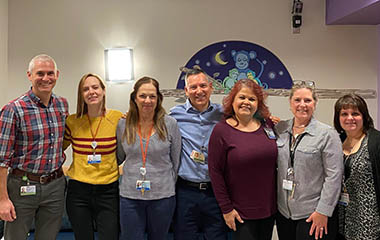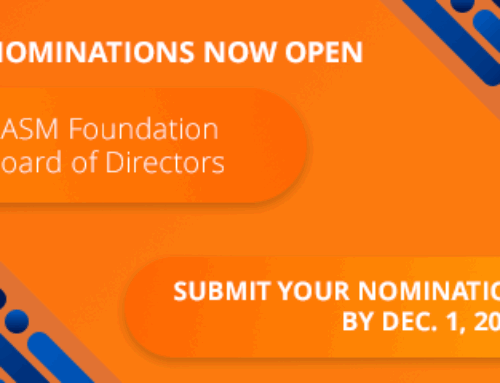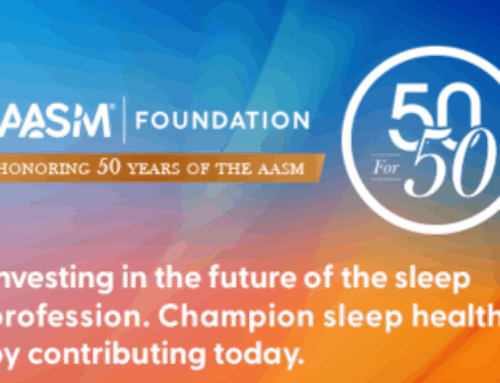Ignacio E. Tapia, MD, MTR, is a past recipient of the AASM Foundation ABSM Junior Faculty Award and is currently a National Institutes of Health-funded pediatric sleep investigator. Learn more about his cross-cutting research for improving treatments for children with obstructive sleep apnea.
Ignacio E. Tapia, MD, MTR, is an attending physician and director of the pediatric pulmonary medicine fellowship program at the Children’s Hospital of Philadelphia, and associate professor of pediatrics at the University of Pennsylvania’s Perelman School of Medicine. Tapia is a past recipient of the AASM Foundation American Board of Sleep Medicine (ABSM) Junior Faculty Award.
His interdisciplinary research interests started with the pathophysiology of obstructive sleep apnea syndrome (OSAS) and its consequences, evolved to evaluating clinical outcomes of different therapies that result in a new or modified treatment for OSA, and led to his current interest in population health disparities for determining racial clinical outcome differences.
“Addressing these sleep research gaps are extremely important as the pathophysiology will help us understand why things happen; clinical trials help determine the best treatments available and investigating health disparities will help us address equitable treatments,” said Tapia.
Preventing cognitive and behavioral complications due to untreated OSAS in children is important for achieving optimal health. Tapia’s 2013 ABSM Junior Faculty Award project, “Mechanisms of Behavioral and Cognitive Dysfunction in Children with Obstructive Sleep Apnea Syndrome,” helped elucidate the relationship between cerebral blood flow regulation due to hypercapnia during wakefulness in children with OSAS.
The primary finding of this project was that children with OSAS had blunted cerebral blood response to hypercapnia compared to healthy children without OSAS, which suggests that mild sleep-disordered breathing is associated with deficits in cerebrovascular response.
“A surprising result was that children who snored, but otherwise had a normal obstructive apnea hypopnea index, also had decreased cerebral blood flow response due to hypercapnia, compared to healthy children, explained Tapia. “This highlights the fact that snoring may not be as innocuous as originally thought.”
Tapia was able to use the preliminary data generated from his 2013 award for securing a National Institutes of Health (NIH) K01 career development grant for the project, “Cerebral Blood Flow and Neurocognition in Children with Obstructive Sleep Apnea.” This project is ongoing and aimed at understanding the mechanisms of neurobehavioral dysfunction in children with OSA by using a novel non-invasive optical device to measure cerebral blood flow and other determinants of brain metabolism during wakefulness and sleep in children with OSAS and controls. These measurements will then be correlated with neurobehavioral testing results.
“The AASM Foundation ABSM Junior Faculty Award was instrumental to secure NIH funding because it allowed me to complete a pilot version of my K01 grant,” said Tapia. “It greatly helped to prove feasibility and show reviewers of my K01 grant application that the team was able to perform this kind of research and that the topic was worth investigating.”
In addition to finalizing his NIH K01 grant, Tapia is currently working on his newest NIH R61/R33 research project grant, “Positive Airway Pressure for the Treatment of the Obstructive Sleep Apnea Syndrome in Children with Down Syndrome.” This grant is part of the trans-NIH research initiative on critical health and quality-of-life needs for individuals with Down Syndrome, the INCLUDE (INvestigation of Co-occurring conditions across the Lifespan to Understand Down syndromE) Project.
During the first phase of the 4.5 year-long grant, Tapia’s team will interview families of children with Down Syndrome and OSA treated with continuous positive airway pressure or bilevel positive airway pressure to understand the experience of children with Down Syndrome and their families implementing and using positive airway pressure (PAP) devices. Once completed, family-centered outcomes will be identified, and Tapia’s team will use this information to conduct a randomized clinical trial to improve adherence in children with Down Syndrome referred for PAP initiation for the treatment of OSA.
Reflecting on his work, Tapia’s projects have furthered the understanding of the pathophysiology of OSA.
“OSA in children may occur not only due to anatomical factors such as adenotonsillar hypertrophy but also due to neuromotor factors, said Tapia. “We know now that some children with OSA, compared to controls, have blunted responses to respiratory stimuli during wakefulness and sleep that can partially resolve after treatment.”
In addition to exploring new treatments for children with OSA, Tapia currently volunteers on the AASM Foundation Career Development Review Committee, evaluating the scientific quality and potential impact of applications received for the AASM Foundation’s Career Development Awards.
Tapia volunteers on the review committee to improve grantsmanship and become familiar with the review process.
“This is important for all researchers as you need to know what areas of an application are critical and how to deliver a strong message. The number of grants you read critically will improve your grantsmanship skills,” explained Tapia.
Tapia enjoys getting to know the spectrum of topics that AASM members are investigating. “It is very easy to become focused on our work only. This opportunity has allowed me to have a broader vision of sleep research,” he said.
As a supporter of early-career sleep researchers, Tapia’s advice is to believe in yourself, not to take no for an answer, and find a great mentor.
“When I emigrated to the United States from Chile to further my education, I already knew I wanted to be involved in research but did not know exactly in what capacity due to lack of exposure. I was not a U.S. citizen at the time and therefore, my funding opportunities were limited,” said Tapia.
“In addition, I had never written a grant of any kind, let alone in English. However, I decided with the amazing support of my mentor, the late and missed Dr. Carole Marcus, to continue working steadily to receive external funding. Carole became my private tutor in English and grant writing, and more importantly, a cheerleader,” said Tapia.
In terms of next steps in continuing to address the research gaps in pediatric sleep medicine, Tapia plans to develop more clinical trials in children with sleep-disordered breathing with and without developmental disabilities and to investigate the socio-ecological causes of health disparities in pediatric sleep.
“We submitted an R01 proposal on this topic and are currently waiting to hear from NIH. This project will focus primarily on sleep health disparities between non-LatinX Caucasian and non-LatinX African American children. If we are funded, and depending on research progress, we plan to submit future grants to expand this research to LatinX and other minority children,” said Tapia.






